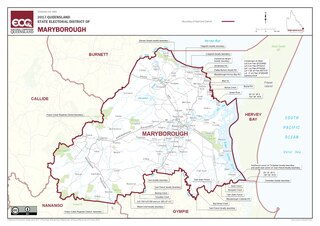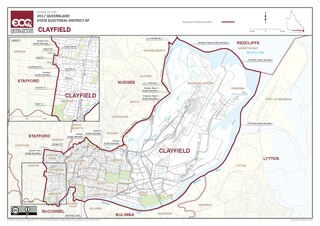| |||||||||||||||||||||||||||||||
All 82 seats in the Legislative Assembly of Queensland 42 Assembly seats were needed for a majority | |||||||||||||||||||||||||||||||
|---|---|---|---|---|---|---|---|---|---|---|---|---|---|---|---|---|---|---|---|---|---|---|---|---|---|---|---|---|---|---|---|
| |||||||||||||||||||||||||||||||
| |||||||||||||||||||||||||||||||
Elections were held in the Australian state of Queensland on 27 May 1972 [1] to elect the 82 members of the Legislative Assembly of Queensland.

Australia, officially the Commonwealth of Australia, is a sovereign country comprising the mainland of the Australian continent, the island of Tasmania and numerous smaller islands. It is the largest country in Oceania and the world's sixth-largest country by total area. The neighbouring countries are Papua New Guinea, Indonesia and East Timor to the north; the Solomon Islands and Vanuatu to the north-east; and New Zealand to the south-east. The population of 25 million is highly urbanised and heavily concentrated on the eastern seaboard. Australia's capital is Canberra, and its largest city is Sydney. The country's other major metropolitan areas are Melbourne, Brisbane, Perth and Adelaide.

The states and territories are the first-level administrative divisions of the Commonwealth of Australia. They are the second level of government in Australia, located between the federal and local government tiers.

Queensland is the second-largest and third-most populous state in the Commonwealth of Australia. Situated in the north-east of the country, it is bordered by the Northern Territory, South Australia and New South Wales to the west, south-west and south respectively. To the east, Queensland is bordered by the Coral Sea and Pacific Ocean. To its north is the Torres Strait, with Papua New Guinea located less than 200 km across it from the mainland. The state is the world's sixth-largest sub-national entity, with an area of 1,852,642 square kilometres (715,309 sq mi).
Contents
The Country-Liberal Coalition won its sixth consecutive victory since it won government in 1957 and also its second victory under Joh Bjelke-Petersen.
The National Party, known as the Country Party until 1974, was a political party in Queensland, Australia, for much of the period from 1915 until 2008. Formed by the Queensland Farmers' Union and serving as the state branch of the National Party of Australia, it initially sought to represent the interests of the farmers but over time became a more general conservative political party in the state, leading to much debate about relations with other conservative parties and a string of mergers that were soon undone. From 1957 it held power as part of a coalition with the state Liberal Party until 1983 when the Liberals broke away and the Nationals continued to govern in their own right until defeat in 1989. The party formed another coalition with the Liberals that took power in 1996 but was defeated in 1998. After a further decade in opposition the two parties merged to form the Liberal National Party of Queensland.
The Liberal Party, originally the Queensland People's Party, was a political party in Queensland, Australia, from the Second World War until 2008. Initially formed as independent body in 1943, it became the Queensland division of the Liberal Party of Australia in 1949. Based predominantly in Brisbane and other cities in Queensland, from 1957 it held power as the junior party in a coalition with the state Country Party, later the National Party, until 1983 when the Liberals broke away and went into opposition. The party formed another coalition with the Nationals that took power in 1996 but was defeated in 1998. After a further decade in opposition the two parties merged to form the Liberal National Party of Queensland.

Sir Johannes Bjelke-Petersen, was an Australian politician. He was the longest-serving and longest-lived Premier of Queensland, holding office from 1968 to 1987, during which time the state underwent considerable economic development. His uncompromising conservatism, his political longevity, and his leadership of a government that, in its later years, was revealed to be institutionally corrupt, made him one of the best-known and most controversial political figures of 20th century Australia.





